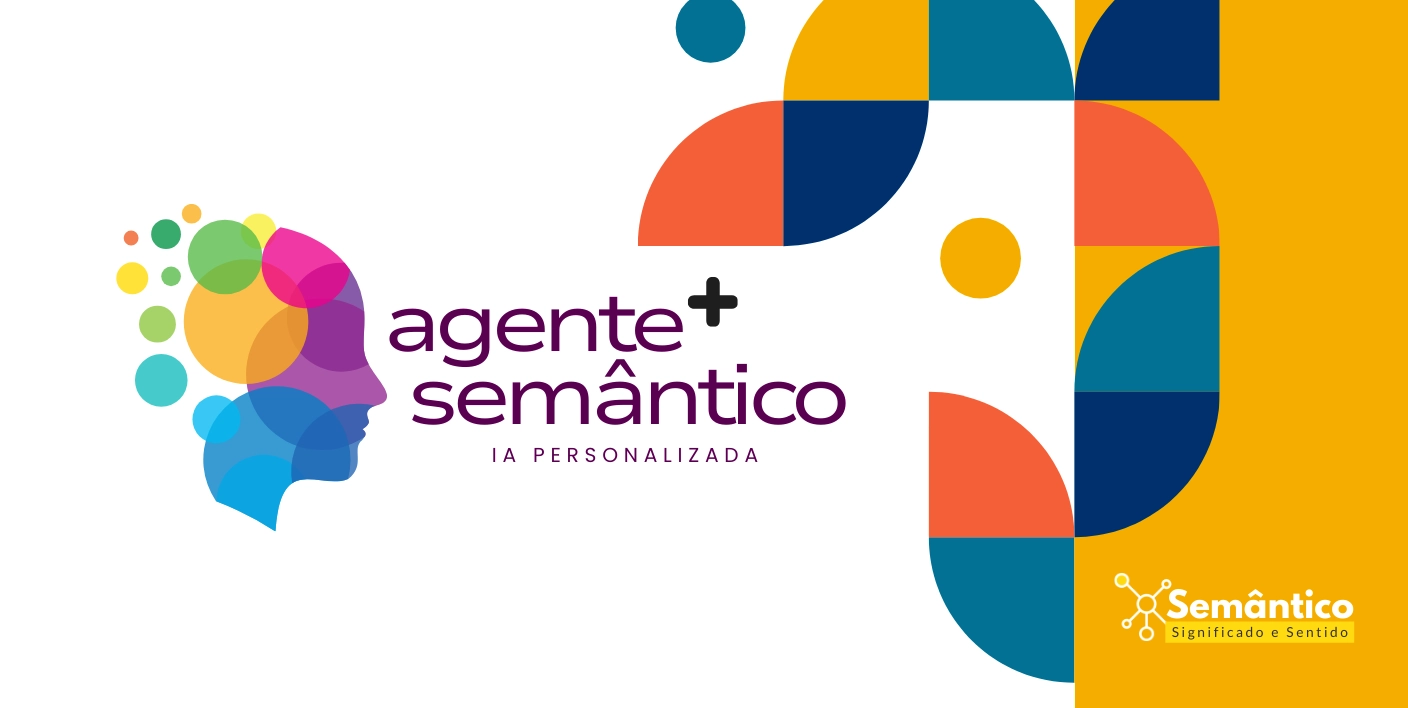Como organizar a informação do seu site?
Na hora de construir ou reestruturar um projeto web, seja um e-commerce, uma plataforma de conteúdo ou um site institucional, uma questão primordial que deveria emergir, antes mesmo da primeira linha de código ser escrita ou do primeiro artigo ser publicado:
Como organizamos a informação que precisamos colocar online?
A era semântica na web iniciou quando o Google colocou no ar o Bert e desde esse momento vivemos um dilema na organização da informação: a base versus o topo.
Este desafio, embora pareça ser puramente técnico, está no cerne da experiência do usuário, da estratégia de conteúdo e, de forma cada vez mais determinante, do sucesso em SEO. A maneira como estruturamos a informação em um site não apenas facilita que os usuários encontrem o que procuram, mas também que os algoritmos, como os do Google, compreendam a profundidade e a autoridade do nosso domínio sobre determinados assuntos.
Para escolher um dos lados do nosso dilema, existem duas estratégias opostas, duas lentes filosóficas através das quais podemos abordar a arquitetura da informação: a abordagem Top-Down (de cima para baixo) e a Bottom-Up (de baixo para cima). Essa escolha não é trivial, fácil de fazer; por carregar implicações profundas e diretas que moldam desde a criação da taxonomia do site até a forma como organizamos a produção de conteúdo, impactando de maneira substancial a eficácia e a eficiência da sua estratégia de SEO Semântico.
A Estratégia Top-Down: construindo do geral para o específico
A abordagem Top-Down, ou “de cima para baixo”, representa o método mais clássico e talvez mais intuitivo de organização da informação. Ela parte de uma visão macroscópica ou panorâmica do Domínio do Conhecimento do qual o site faz parte.
O processo começa na Análise de Domínio e depois segue com a definição das categorias mais amplas e principais, os grandes pilares conceituais que sustentarão toda a estrutura, selecionadas pelo time que está desenvolvendo o projeto. Preciso deixar claro que esse é um exercício de planejamento e antecipação, em que os arquitetos da informação, especialistas em SEO, e os estrategistas de conteúdo primeiro desenham o esqueleto da informação do site, estabelecendo os “continentes” antes de se preocuparem com os “países” e “cidades”.
Mas esse processo precisa envolver todos na organização dona do projeto para não correr o risco de criar um mapa inicial com uma visão enviesada da área do conhecimento a qual ela faz parte.
Na imagem abaixo, temos a primeira parte do Fluxo de Trabalho Semântico que começa exatamente com essa análise por saber da sua importância.

Somente após a solidificação dessa estrutura de alto nível é que o trabalho desce para as subcategorias e, finalmente, para os itens individuais.
Para ilustrar de forma prática, imaginemos um gestor planejando o lançamento de um novo e-commerce de vestuário. Se ele adotar a estratégia Top-Down, a primeira etapa será tomar uma decisão deliberada sobre as categorias principais que a loja oferecerá. A equipe poderá definir que os pilares da loja serão “Camisetas”, “Tênis”, “Casacos”, “Calças” e “Meias”.
Essa decisão antecede o cadastro de qualquer produto, a escrita de qualquer texto ou até mesmo abrir o Figma para estruturar qualquer elemento da interface.
Com essas categorias-mãe estabelecidas, o próximo passo será detalhar a hierarquia, criando subcategorias como “Tênis de Corrida” e “Tênis Casuais” dentro de “Tênis”, ou “Camisetas para Treino” e “Camisetas Casuais”.
Apenas com essa arquitetura definida é que os textos, descrições e interfaces entram em produção. Agora os produtos específicos, aquele modelo de tênis de corrida da marca X, tamanho 42, na cor azul, serão finalmente cadastrados e alocados dentro da estrutura já existente. A estrutura precede e governa o conteúdo, que é orientado pela organização da informação.
As implicações dessa abordagem para conteúdo e SEO vão além do começo organizado de um projeto. Quando falamos de estratégia de conteúdo, o modelo Top-Down alinha-se perfeitamente com o conceito de funil de marketing, permitindo que a produção comece com conteúdos de topo que abordam os assuntos mais amplos.
Do ponto de vista do SEO Semântico, essa estratégia é particularmente importante. Ela permite que se trabalhe primeiro nos conceitos mais amplos, organizando a informação geral para depois nos ajudar a definir as entidades que representam as categorias principais e estabelecer as relações entre elas. Ao fazer isso, você está essencialmente construindo a “rede” de conhecimento do seu site de antemão.
Quando as entidades mais específicas (os produtos, os artigos detalhados) são finalmente adicionadas, elas são inseridas em um contexto semântico já rico e bem estabelecido, o que facilita demais para as ferramentas de busca compreenderem a relação entre o item específico e o conceito geral ao qual ele pertence.
A Estratégia Bottom-Up: a ordem surge a partir da base
Em contraste direto com a abordagem hierárquica e planejada do Top-Down, a estratégia Bottom-Up, ou “de baixo para cima”, opera sob uma lógica inversa, emergente e orgânica.
Ela parte da ideia de que a estrutura ideal não é imposta de cima, mas sim descoberta a partir das características intrínsecas dos próprios elementos que precisam ser organizados. O processo começa no nível mais granular: com uma lista extensa e, inicialmente, desorganizada de todos os itens individuais. Em vez de tentar encaixar esses itens em caixas pré-concebidas, a metodologia Bottom-Up envolve um processo de agrupamento por afinidade, onde os itens são analisados e clusterizados com base em suas características em comum. A estrutura, nesse caso, não é um projeto inicial, mas o resultado de uma análise profunda do próprio conteúdo ou inventário.
Retornando ao nosso cenário de e-commerce, a aplicação da estratégia Bottom-Up transformaria completamente e inverteria o Fluxo de Trabalho Semântico aplicado ao projeto.
Em vez de definir categorias como “Tênis” ou “Camisetas”, o processo começaria com uma base de dados gigante contendo todos os produtos. O trabalho dos organizadores seria analisar essa massa de dados e formar grupos. Eles poderiam notar que um grande número de tênis compartilha a característica “amortecimento de alto impacto”, formando um grupo que poderia ser nomeado “Tênis de Corrida”.
Outro grupo poderia emergir de produtos com “solado de borracha” e “design clássico”, que seria batizado de “Tênis Casuais”. Esses nomes, que surgiram organicamente dos próprios produtos, se tornariam as categorias e subcategorias do site.
Nesse caso, a taxonomia se torna a consequência da análise dos itens, não sua premissa.
O impacto dessa estratégia no conteúdo e no SEO é bem diferente do outro modelo. Do ponto de vista da criação de conteúdo, a abordagem Bottom-Up demanda o que pode ser descrito como uma “pulverização” inicial, mudando o nosso foco inicial na criação de conteúdo para os elementos básicos: as páginas de produto e suas descrições detalhadas.
Para o SEO Semântico, essa abordagem constrói a rede de conhecimento de baixo para cima, fazendo com que as primeiras entidades a serem definidas sejam as mais específicas (o produto “Tênis X Modelo Y”). O trabalho inicial então consiste em estabelecer conexões e relações entre essas entidades de base. Seja no texto escrito ou através de links no conteúdo e na interface.
Aos poucos, conforme os agrupamentos se solidificam, esses conjuntos de entidades são conectados a conceitos maiores (a categoria “Tênis de Corrida”), que são definidos posteriormente. A autoridade é construída a partir da profundidade dos detalhes, que gradualmente se unem para formar um todo coeso.
Não sei se ficou claro, mas a estratégia bottom-up demanda mais tempo e cuidado no design de todas as partes do projeto. Como as categorias serão definidas posteriormente, enfrentamos alguns desafios: o nosso time de UX tem que estar atento a que as categorias com que vão trabalhar para adiantar qualquer fase serão provisórias; os designers da interface também precisam estar atentos a isso. O time de redatores precisa marcar seus textos sobre os produtos com informações que avisam que as categorias podem sofrer mudança de nome.
Top-Down vs. Bottom-Up: qual o impacto na sua estratégia de SEO?
A decisão entre uma abordagem Top-Down e Bottom-Up não pode ser vista como uma mera preferência metodológica; ela é uma escolha estratégica com consequências diretas para a sua performance em SEO.
Cada caminho molda a forma como cada parte do projeto é planejada, como as informações estão organizadas, como o conteúdo vai ser produzido, como as entidades serão definidas e como a autoridade semântica do seu projeto será desenvolvida ao longo do tempo. Precisamos compreender essas diferenças para alinhar a arquitetura da informação com os objetivos de negócio.
Preparei a tabela abaixo para lhe ajudar a organizar visualmente o que já falamos até aqui:
| Ponto de Comparação | Estratégia Top-Down | Estratégia Bottom-Up |
| Ponto de Partida | Categorias principais predefinidas e uma estrutura hierárquica clara. | Uma coleção de itens, produtos ou conteúdos individuais e granulares. |
| Fluxo de Conteúdo | Do geral para o específico. Similar a um funil, começando com temas amplos e aprofundando gradualmente. | Do específico para o geral. Exige um grande volume de informação na base antes de construir as páginas de categoria. |
| Definição de Entidades (SEO Semântico) | Define os conceitos maiores (categorias) primeiro, preparando uma rede para receber as entidades específicas. | Define as entidades de base primeiro, construindo a rede de conhecimento de baixo para cima. |
| Ideal para | Projetos com escopo bem definido, categorias claras e um universo de informação mais controlado. | Projetos com grande volume de itens heterogêneos, onde as categorias não são óbvias e precisam emergir da análise. |
Existe um detalhe escondido na aplicação dessas estratégias que é importante ser compreendido e ele mora na diferença entre o processo de criação e a representação final da arquitetura.
Quando navegamos em um site bem organizado, a estrutura de menus hierárquicos nos dá a impressão de que ela foi concebida de cima para baixo. No entanto, essa clareza final pode perfeitamente ser o resultado de um processo Bottom-Up meticuloso e bem executado. A taxonomia limpa que o usuário vê pode ter emergido da análise de milhares de produtos ou artigos, e não de uma definição prévia.
Entender essas possibilidades eleva a discussão de uma simples escolha binária para uma compreensão mais sofisticada de processo versus resultado.
O impacto no seu trabalho como estrategista
Portanto, do nosso ponto de vista, a sua tarefa como estrategista é analisar qual dessas metodologias se alinha melhor não apenas à natureza da sua informação, mas também ao contexto do seu projeto.
Para o lançamento de um novo site com um escopo bem definido, a abordagem Top-Down oferece controle e clareza desde o início. Mas em cenários de alta complexidade, como o redesign de um grande portal, uma migração de plataforma ou um reajuste de arquitetura, a abordagem Bottom-Up é um caminho mais seguro, apesar de mais lento. Ela força uma análise profunda do inventário de conteúdo existente, garantindo que a nova estrutura seja um reflexo fiel e eficiente dos ativos que você já possui, evitando que categorias “órfãs” ou mal representadas prejudiquem a usabilidade e o SEO.
Certo, falamos brevemente sobre essas duas formas de organizar informação e você pode estar cheio de ideias e feliz com o que leu, mas eu não. Quero ir além.
Agora eu vou propor um exercício de imaginação: vamos pensar que eu e você estamos construindo uma nova loja online e precisamos organizar a informação dela, para começar do jeito certo, antes de escrever qualquer coisa ou abrir o Figma.
Vem comigo construir uma loja online com organização e descoberta.
A nossa loja dos sonhos e uma pilha de produtos
Agora eu vou lhe ajudar a realizar um sonho: abrir a sua primeira loja online de roupas e acessórios!
O estoque inicial acaba de chegar e você está cercado por caixas de camisetas, calças, tênis e casacos. A empolgação é enorme, mas logo surge um desafio: como organizar tudo isso no meu site?
Você me chamou para ajudar você e vamos começar a refletir juntos sobre o caminho que vamos seguir.
Sabemos que colocar todos os produtos em uma única página seria criar o caos. Precisamos criar uma estrutura, uma arquitetura de informação que guie seus visitantes de forma clara aos produtos que eles querem. Mas qual é a melhor maneira de fazer isso? Como essa organização afeta a forma como os clientes encontram o que procuram e como o Google entende o site que estamos construindo?
Para resolver esse problema, vamos voltar às duas abordagens de que falamos e refletir sobre qual é a melhor para construir sua loja. São dois caminhos que, embora opostos na sua lógica, buscam o mesmo objetivo: criar uma experiência clara para o cliente e uma estrutura sólida para os mecanismos de busca.
O Primeiro Caminho: começando pelos departamentos
Essa é a nossa abordagem “De Cima para Baixo” e neste primeiro caminho, vamos agir como os arquitetos de uma grande loja de departamentos. Olhamos para sua lista de produtos iniciais:
- Camisetas;
- Tênis;
- Casacos;
- Calças e
- meias
E, a partir dela, decidimos quais serão as seções principais da sua loja. Pegamos papel e caneta e desenhamos a planta, definindo departamentos como “Partes de Cima”, “Calças” e “Calçados”. Nos sentimos como arquitetos de uma loja física desenhando a planta com os corredores e departamentos. Imaginamos o fluxo de pessoas navegando pelos corredores.
Só depois de definir esses grandes “conceitos” é que começamos a alocar os produtos nas “prateleiras”. As camisetas e casacos vão para o departamento de “Tops & Casacos”, os tênis para o de “Calçados”, e assim por diante. A estrutura hierárquica ficou clara e organizada desde o início.
Visualmente, a organização da sua loja agora se parece com isto:
- Departamento: Tops & Casacos
- Subcategoria: Camisetas
- Subcategoria: Casacos
- Departamento: Calças
- Subcategoria: Esportivas
- Subcategoria: Casuais
- Departamento: Calçados
- Subcategoria: Tênis
Em um trabalho real, teríamos muitos debates acerca desta organização e principalmente da nomeação de cada categoria. Essa é a parte onde temos mais idas e vindas.
Mas a grande vantagem desta abordagem é a clareza e a previsibilidade. O cliente que entra no seu site entende imediatamente como navegar. Para o SEO, essa estratégia permite que você defina os “conceitos maiores” primeiro, focando seus esforços em encontrar os conceitos principais de que precisa falar.
Estamos construindo a estrutura da casa antes de colocar os móveis, preparando o terreno para conectar os produtos específicos (as “entidades”) que serão adicionados depois.
Mas e se, em vez de planejar os departamentos, começássemos olhando para cada produto individualmente?
O Segundo Caminho: começando pelos produtos
Neste segundo caminho, a abordagem é completamente diferente. Em vez de começar com uma planta, vamos esvaziar todas as caixas e espalhar os produtos pelo chão. Agora temos uma lista gigante de itens e começamos a agrupá-los pelo que faz sentido, sem nos prendermos a nomes de categorias predefinidos.
O processo de pensamento se parece mais com uma descoberta:
“Vamos pegar aquele tênis de corrida específico e aquele outro modelo de basquete. Eles têm características em comum. Vamos juntá-los e chamar esse grupo de ‘Tênis Esportivos’. Agora, vamos pegar aquela camiseta de banda e aquela camiseta com estampa de filme. Podemos criar um grupo para elas chamado ‘Camisetas Divertidas’.”
A partir desses agrupamentos, um nome para a categoria “surgiu naturalmente”. Nós não impusemos uma estrutura; a descobrimos a partir das características dos próprios produtos. Estamos construindo a organização da base (os produtos) para o topo (as categorias).
A principal vantagem desta abordagem é sua força quando se tem muitos produtos específicos e as categorias não são óbvias.
Para o SEO, a estratégia se inverte: você foca em definir primeiro as “entidades base” (os produtos, nesse exemplo), e o trabalho de SEO começa conectando essas entidades entre si, e só depois as conecta a conceitos maiores, construindo a autoridade do seu site a partir dos itens mais específicos.
Isso significa que sua estratégia de conteúdo provavelmente se concentrará em criar um rico volume de páginas de produtos detalhadas primeiro, construindo uma base sólida antes mesmo de finalizar as páginas de categoria mais amplas.
Agora que conhecemos os dois caminhos, qual deles é o melhor para a nossa loja? Me diz ai nos comentários!
Vamos comparar os caminhos: Qual história sua loja deve contar?
Ambas as estratégias são válidas, mas refletem maneiras diferentes de pensar sobre conteúdo e estrutura. Novamente, construí uma tabela para me ajudar a resumir as diferenças fundamentais para ajudar você a decidir:
| Aspecto | Caminho “De Cima para Baixo” | Caminho “De Baixo para Cima” |
|---|---|---|
| Ponto de Partida | Define as categorias principais primeiro (ex.: “Roupas”, “Calçados”). | Começa com uma lista de produtos específicos e agrupa-os. |
| Processo de Criação | Pensa no “topo” (o geral) e depois desce para os detalhes. | Pensa na “base” (o específico) e sobe para criar as categorias. |
| Estratégia de Conteúdo | Pode começar com conteúdos mais amplos sobre as categorias. | Foca primeiro em criar conteúdo para cada produto ou item específico. |
| Estratégia de SEO | Define os conceitos maiores primeiro, preparando a estrutura para receber as “entidades” (produtos). | Define as “entidades” (produtos) primeiro e as conecta, construindo gradualmente o entendimento para os conceitos maiores. |
Espero que tenha ficado bem claro que a escolha não é sobre certo ou errado, mas sobre qual estratégia se alinha melhor com o que você vende, qual domínio do conhecimento está conectado e o que faz sentido para o seu negócio em particular.
Organizar é uma estratégia, não apenas uma arrumação
A história da criação da sua loja online nos ensina uma lição interessante: a organização de um site é uma decisão estratégica que impacta diretamente a experiência do cliente e como os mecanismos de busca compreendem seu negócio. Está longe de ser uma simples “arrumação de casa”.
Não existe uma resposta única ou uma fórmula mágica para te ajudar a decidir, infelizmente. Como vimos, a escolha “vai depender muito do tipo de produto que a gente tem”. Uma loja com categorias bem definidas pode se beneficiar da abordagem “de cima para baixo”, enquanto um e-commerce com um catálogo vasto e variado pode descobrir sua melhor estrutura vindo “de baixo para cima”.
Ao entender essas duas abordagens, você não está mais apenas organizando produtos. Você está tomando uma decisão consciente e estratégica sobre como sua loja irá funcionar, crescer e ser descoberta. Agora, você tem o conhecimento para escolher o melhor caminho para construir a loja dos seus sonhos. E se precisar de uma ajuda para planejar e executar esse projeto, me chame.
Vamos repensar a arquitetura da sua informação?
A organização da informação é um dos pilares de qualquer projeto que precise performar na Web, não só em buscas, mas em todos os meios. Porém, se é subestimado, você perde a chance de executar uma estratégia digital bem-sucedida.
A forma como transformamos o conhecimento interno de uma empresa em informação de qualidade na web não afeta apenas a usabilidade e a jornada do usuário, mas envia sinais bem claros às ferramentas de busca (até mesmo as generativas) sobre do que nosso site trata e qual a nossa profundidade de especialização.
As abordagens Top-Down e Bottom-Up oferecem, portanto, dois caminhos distintos para alcançar uma arquitetura coerente, cada uma com suas próprias vantagens e implicações para o SEO Semântico.
Reflita estrategicamente sobre qual dessas metodologias se adapta melhor à sua realidade; faça com calma e peça ajuda caso precise. Esse é um passo determinante na construção de uma base sólida para o crescimento orgânico e a autoridade digital do seu negócio na Web.
Ao olhar para a estrutura do seu próprio site, você consegue identificar se a sua arquitetura foi construída de cima para baixo ou de baixo para cima? E, mais importante, essa abordagem ainda é a mais eficiente para os seus objetivos atuais e futuros?
Se não souber responder a essas perguntas, me chame.
Esse artigo foi criado com base neste no vídeo chamado “SEO Semântico: Como Organizar a Informação do Seu Site? (Top-Down vs. Bottom-Up)“, que eu gravei recentemente e uso o processo que eu criei e chamei de agente+Semântico. Se você gostou do resultado, me procure para conversamos como implementar no seu trabalho.






Publicar comentário